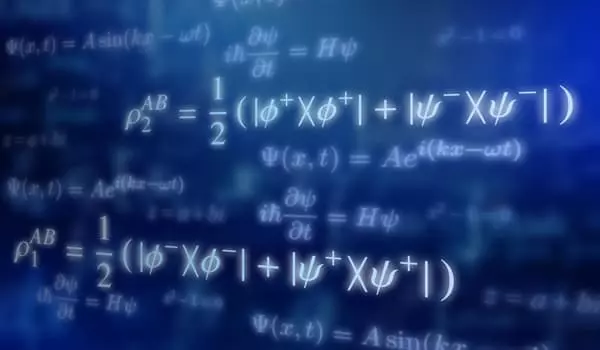An international team of researchers demonstrates, using a concrete theoretical experiment, that the prediction made by standard complex quantum theory cannot be expressed by its real counterpart, confirming the need for complex numbers.
Physicists develop theories to explain nature. Let us use an analogy from our everyday lives, such as going on a hike in the mountains, to explain it. We usually use a map to avoid getting lost. The map depicts the mountain, complete with houses, rivers, and paths. We can easily find our way to the top of the mountain by using it. However, the map does not represent the mountain. The map is the theory we use to represent the reality of the mountain.
Physical theories are expressed mathematically using objects such as equations, integrals, and derivatives. Throughout history, physics theories evolved, employing more complex mathematical concepts to describe more complex physics phenomena. The introduction of quantum theory in the early twentieth century to represent the microscopic world was a game changer. It was the first theory to be expressed in terms of complex numbers, which was one of the many significant changes it brought.
When we found this result, the challenge was to see if our thought experiment could be done with current technologies. We discovered a way to adapt our protocol to work with their cutting-edge devices after consulting with colleagues in Shenzhen, China.
Marc-Olivier Renou
Complex numbers, invented by mathematicians centuries ago, are made up of a real and an imaginary part. Descartes, the famous philosopher regarded as the father of rational sciences, coined the term “imaginary” to contrast it with what he referred to as “real” numbers. Because of this imaginary part, complex numbers were not expected to play a similar role in physics, despite their fundamental role in mathematics. Indeed, prior to quantum theory, Newton’s mechanics and Maxwell’s electromagnetism used real numbers to describe, for example, how objects move and how electromagnetic fields propagate. Although the theories use complex numbers to simplify some calculations, their axioms only use real numbers.
Schrödinger’s bewilderment
Because its underlying postulates were expressed in terms of complex numbers, quantum theory posed a significant challenge to this state of affairs. Even though the new theory is very useful for predicting experiment results and, for example, perfectly explains the hydrogen atom energy levels, it goes against intuition in favor of real numbers. In his search for a description of electrons, Schrödinger was the first to use complex numbers in quantum theory, as demonstrated by his famous equation.

However, he could not imagine complex numbers being required in physics at that fundamental level. It was as if he had discovered a map to represent the mountains, but this map was composed of abstract and non-intuitive drawings. He was so perplexed that he wrote Lorentz a letter on June 6, 1926, stating “What is objectionable here, and indeed directly objectionable, is the use of complex numbers. This is unquestionably a real function.” Several decades later, in 1960, Prof. E.C.G. Stueckelberg of the University of Geneva demonstrated that all quantum theory predictions for single-particle experiments could be equally derived using only real numbers. Since then, the consensus was that complex numbers in quantum theory were only a convenient tool.
Indeed, the team of researchers devised a concrete experimental proposal involving three parties linked by two particle sources where the prediction of standard complex quantum theory cannot be expressed by its real counterpart.
Two sources and three nodes
To accomplish this, they devised a scenario involving two independent sources (S and R) placed in an elementary quantum network between three measurement nodes (A, B, and C). The source S emits two particles, let’s call them photons, one to A and the other to B. The two photons are prepared to be entangled, as in polarization. That is, they have correlated polarization in a way that is permitted by (both complex and real) quantum theory but not classically possible.
The source R does the same thing, emitting two more entangled photons and sending them to B and C, respectively. The main goal of this research was to find the best way to measure these four photons in nodes A, B, and C in order to obtain predictions that cannot be explained when quantum theory is limited to real numbers.
“When we found this result, the challenge was to see if our thought experiment could be done with current technologies,” says ICFO researcher Marc-Olivier Renou. We discovered a way to adapt our protocol to work with their cutting-edge devices after consulting with colleagues in Shenzhen, China.
The findings, which were published in Nature, can be viewed as a generalization of Bell’s theorem, which provides a quantum experiment that cannot be explained by any local physics formalism. In Bell’s experiment, one quantum source S emits two entangled photons, one to A and the other to B, both of which are prepared in an entangled state. In this case, however, two independent sources are required; the assumed independence is critical and was carefully designed in the experiment.
The study also demonstrates how excellent predictions can be obtained by combining the concept of a quantum network with Bell’s ideas. Without a doubt, the tools developed to achieve this first result will enable physicists to gain a better understanding of quantum theory, and will one day trigger the realization and materialization of previously unfathomable applications for the quantum internet.





